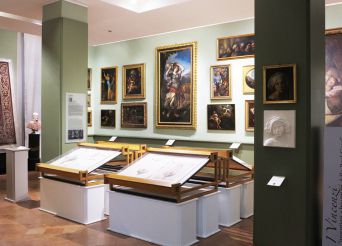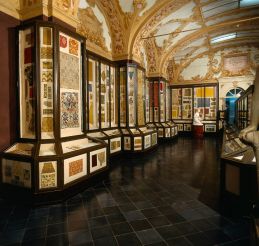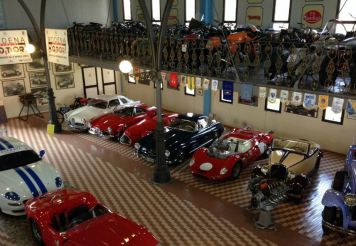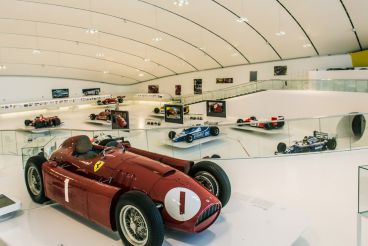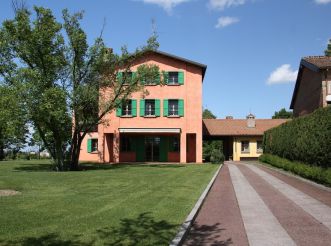Municipal Museum of Art, Modena
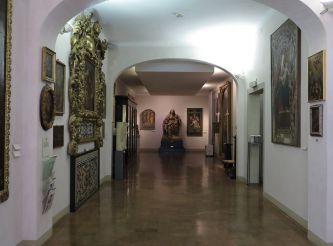
Municipal Museum of Art (Museo Civico d'Arte) in Modena is part of the City's Civic Museums. It exhibits a huge number of a variety of works of art, both artistic and decorative, most of which are relevant to the local province. This museum will carry the visitor headlong into their corridors.
History of the museum
The building, which houses collections of city museums, was built in 1764-1771. Its construction was ordered by the Duke of Francesco III d'Este, and his family used the palace for a hundred years. In 1871, after the archaeological excavations, the Modena Civil Museum was founded. And in 10 years, in 1881, the palazzo was redeemed by the city authorities. And in the same year it housed the first exhibition of the newly created museum. Throughout the existence of the institution, its collection was constantly replenished with new exhibits thanks to donations from private collectors and their own acquisitions. In 1962, it was divided into 2 parts: the Municipal Museum of Archeology and Ethnology, and the Municipal Museum of Art. Despite this, in connection with the agreement reached in the 19th century, the museum route remained holistic.
Exposition of the museum
The museum has a rich and striking permanent collection of art works, which can be divided into two large sections. The first is the artistic heritage of the city, which in turn is divided into several collections:
- Sculptures and paintings. This part of the collection keeps many exhibits, created by local artists, since the Middle Ages, and until the end of the 19th century. There are fonts and fragments of frescoes of the 13th-14th century from the city's cathedral. Canvases by famous Italian artists Antonio Begarelli, Ludovico Lana, Sigismondo Caula, Giacomo Zoboli, Adeodato Malatesta, Giovanni Cappelli, Gaetano Bellei, Giovanni Muzzioli, Casimiro Jodi, Tino Pelloni can be singles out among the paintings.
- Collection of Matteo Campori. In 1929, the Marquis gave the museum a family collection of paintings, mostly Italian artists of the 17-18 centuries. Among them there are quite valuable copies of the authorship of Giuseppe Maria Crespi, Giacomo Ceruti, Ludovico Lana, Francesco Stringa.
- Collection Carlo Sernicoli. In 2007, an antiquarian from Modena, a former accountant, bequeathed to exhibit in the museum his collection for 2 years after his death. In addition to 49 items of silverware, it includes 36 paintings. Among them there are paintings by artists of the 20th century, as well as famous masters of the past: Elisabetta Sirani, Guercino and Giuseppe Maria Crespi.
- The Giuseppe Graziosi Foundation. This collection was presented to the museum by the heirs of the famous sculptor from Modena in 1984. It includes about 70 plaster casts, which are copies of the master's works. Also there is a graphic part of the exhibition that includes more than 200 pieces of drawings, engravings and lithographs.
Another section of the museum's exposition, no less important and interesting, is decorative art. It is also structurally divided into several parts:
- Musical instruments. The core of the collection is a donation by Count Luigi Francesco Valdrighi of his private collection in 1892. Keyboard, wind and string instruments of the 18-19th centuries are exhibited here.
- Leather and covers. Includes about a hundred different items made out of leather that document its use in the manufacture of furniture 16-19 centuries. Also in the collection there are more than 400 copies of decorative book covers from the collection of Count Luigi Alberto Gandini.
- Scales. The system of measures and scales used in Modena in the 17th-19th centuries is presented here.
- Architectural decoration. More than a hundred items show architectural decorations used during different periods in the Po Valley: gables, capitals, friezes, rosettes, ornaments and Gothic ornaments.
- Scientific instruments. A large number of different devices and tools used by scientists of the 18-19 century is represented here. They came mainly from the physics room of the local university. Among the exhibits there are clocks, globes, microscopes and much more.
- Glass and ceramics. Various utensils (cups, plates, vases) show the history of local production from the 15th to 19th centuries. There is also a collection of Murano glass from the 16th to 18th centuries, and glass objects from scientific laboratories of physics and chemistry.
- Collection of Paolo Coccapani Imperiali. In 1898 the museum collection was enlarged thanks to the donation of the Marquis. In his collection there are many fine examples of weapons and horse harness 16-19 century, made by local craftsmen.
- Fabrics. It is a rich collection of textiles, donated in 1882 by Count Luigi Alberto Gandini. It includes about 2,500 pieces of clothing and interior items from the 14th to 19th centuries: velvet, brocade, satin, taffeta, printed canvases, embroideries, needles and bobbin laces, scraps, ribbons, fringe and so on.
The museum also has the Risorgimento Foundation, founded in 1894. It covers the period of the Napoleonic wars, the unification of Italy, the Italo-Turkish war of 1911-1912 and the First World War. It holds 2000 memorabilia, 1500 volumes, a documentary collection of pamphlets and autographs, and more than 2500 photographs. Unfortunately, since 1994 the collection has been closed for visitors, and its reorganization has been going on for a long time.
In addition, the museum has a library of about 7,000 volumes specializing in local history and decorative art, in particular, items that are in collections (weapons, ceramics, musical and scientific instruments, textiles, glass). The section of magazines includes about 100 modern Italian and foreign specialized publications.
How to get there
The museum is located in the historic center of Modena, on the street Largo Porta S. Agostino, 337. In the same palazzo there is also the Lapidary Museum. Opposite the palace there are bus stops Sant'Agostino Museo (routes 6, 7, 11A) and Ospedale Estense (routes 2, 5, 13).
Opening hours: Tuesday to Friday from 9:00 to 12:00, on Saturday and Sunday – from 10:00 to 13:00 and from 16:00 to 19:00. On weekdays after lunch the museum can be visited according to the advance booking in a group of 20 people. Monday is a day off. Phone number: (+39) 059 203 3101.
Free admission.



